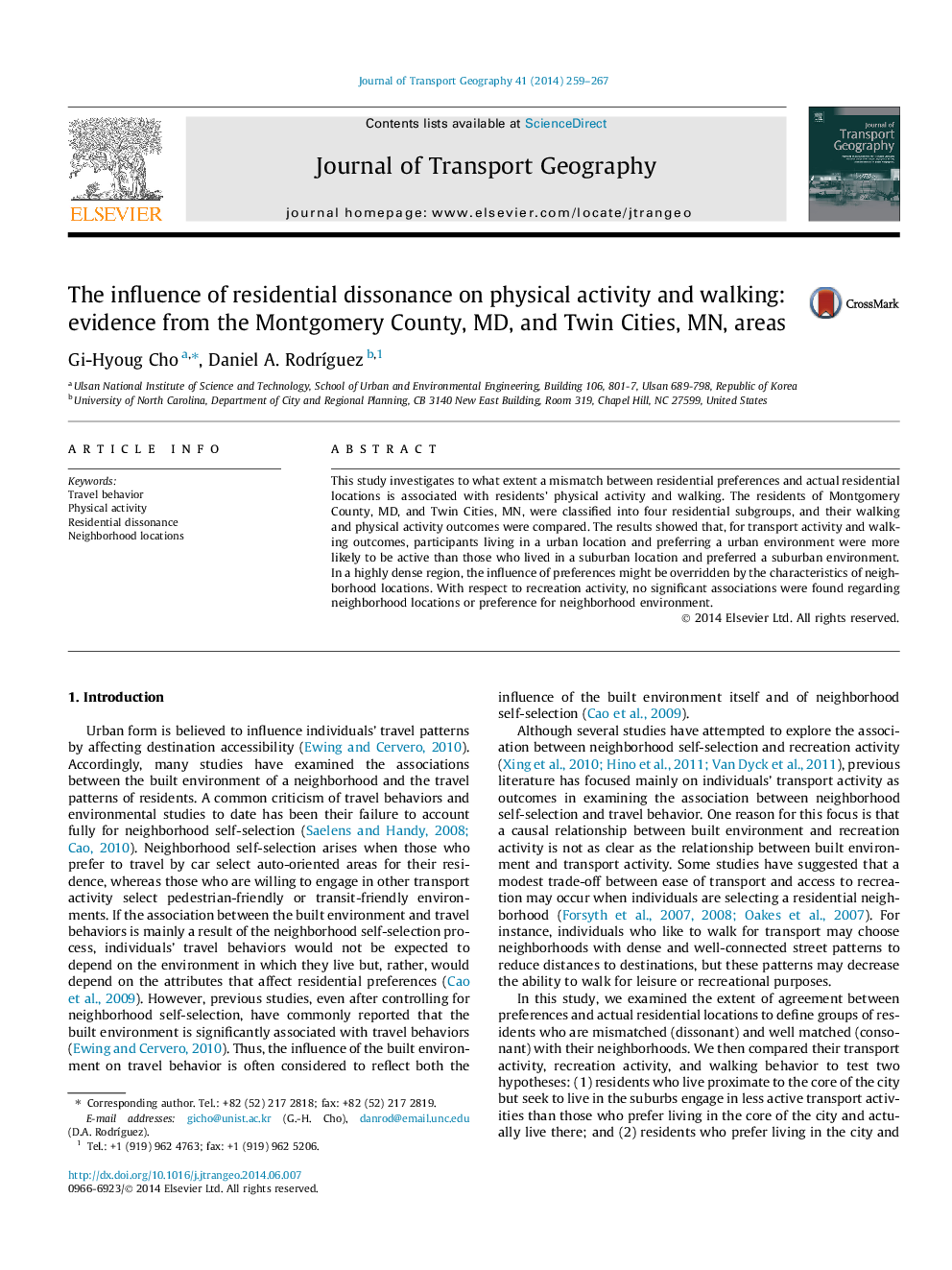| Article ID | Journal | Published Year | Pages | File Type |
|---|---|---|---|---|
| 7486053 | Journal of Transport Geography | 2014 | 9 Pages |
Abstract
This study investigates to what extent a mismatch between residential preferences and actual residential locations is associated with residents' physical activity and walking. The residents of Montgomery County, MD, and Twin Cities, MN, were classified into four residential subgroups, and their walking and physical activity outcomes were compared. The results showed that, for transport activity and walking outcomes, participants living in a urban location and preferring a urban environment were more likely to be active than those who lived in a suburban location and preferred a suburban environment. In a highly dense region, the influence of preferences might be overridden by the characteristics of neighborhood locations. With respect to recreation activity, no significant associations were found regarding neighborhood locations or preference for neighborhood environment.
Related Topics
Life Sciences
Environmental Science
Environmental Science (General)
Authors
Gi-Hyoug Cho, Daniel A. RodrÃguez,
